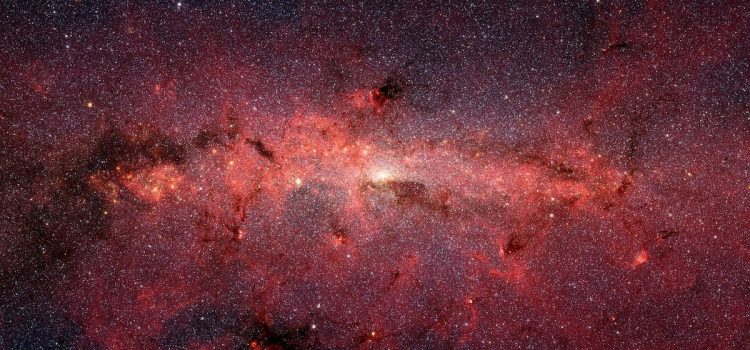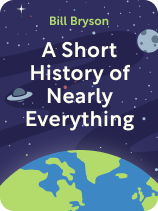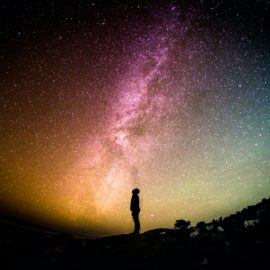

This article is an excerpt from the Shortform book guide to "A Short History of Nearly Everything" by Bill Bryson. Shortform has the world's best summaries and analyses of books you should be reading.
Like this article? Sign up for a free trial here.
What’s the theoretical basis for the big bang? What’s a supernova? Why is Earth’s moon important?
Consider the matter, energy, stars, and planets that make up our universe. At some point, they came into existence. Scientists have developed certain understandings about the big bang, the life cycle of stars, and the formation of the solar system.
Continue reading for a brief history of the cosmos.
The Big Bang
Bill Bryson provides a brief history of the cosmos in his book, explaining that scientists don’t know exactly how or when the universe began. Estimates of its age vary from 10 to 20 billion years, with the most common figure being 13.7 billion years. What they do know—or at least generally agree on—is that the universe started out very small and dense and expanded rapidly from this point of origin. This is known as the Big Bang Theory.
Bryson explains that the big bang was the beginning of space, time, and the elementary particles that make up matter and energy. Space itself expands outward from the point of origin, like the expanding surface of an inflating balloon. Like space, time itself began with the big bang, so, by definition, nothing happened before that.
| Theoretical Basis for the Big Bang Physicist Stephen Hawking discusses the theoretical basis for the Big Bang Theory in more detail in A Brief History of Time. Hawking points out that as early as the 17th century, Newton’s theory of gravity implied that the universe must be either expanding outward from a point of origin or collapsing back toward it, but scientists largely overlooked this fact until the expansion of the universe was observed in the 20th century. As Hawking explains, Einstein’s theory of general relativity allowed physicists to determine that space itself was expanding from a point of origin by providing a more sophisticated model of gravity and the relationship between gravity and spacetime. Hawking also believed that when a theory could be developed to model gravity using quantum mechanics, it would shed further light on the origins of the universe. However, a workable quantum theory of gravity has not yet been developed. |
The Life Cycle of Stars
At first, the universe consisted only of clouds of gas. Over time gravity caused them to clump together. As they did, some of the densest regions collapsed in on themselves, creating stars. The resulting clumps of stars became galaxies.
As Bryson explains, stars ‘burn’ by fusing the atomic nuclei of lighter elements into heavier elements. Certain types of stars explode after they burn up all of their hydrogen and helium. The explosion is called a supernova.
The Formation of the Solar System
Bryson says our own solar system formed about 4.6 billion years ago in a nebula that had been enriched by supernova debris. Then, it took about 100 million years for Earth and the other planets to coalesce from this cloud of gas and dust around the newly formed sun.
About that time (4.5 billion years ago), the Earth collided with an object roughly the size of Mars. The impact ejected a large amount of rock and debris into orbit, forming Earth’s Moon. This was important for us because the Moon acts as a stabilizer for Earth’s rotation.
According to Bryson, Earth continued to receive a heavy bombardment of smaller asteroids and comets for the next 500 million years. These impacts provided additional water and carbon, which would later be important for life.

———End of Preview———
Like what you just read? Read the rest of the world's best book summary and analysis of Bill Bryson's "A Short History of Nearly Everything" at Shortform.
Here's what you'll find in our full A Short History of Nearly Everything summary:
- An accessible overview of the natural sciences
- A full history of the universe, Earth, and life as we know it
- A look at the unknowns and controversies that still exist in the sciences






